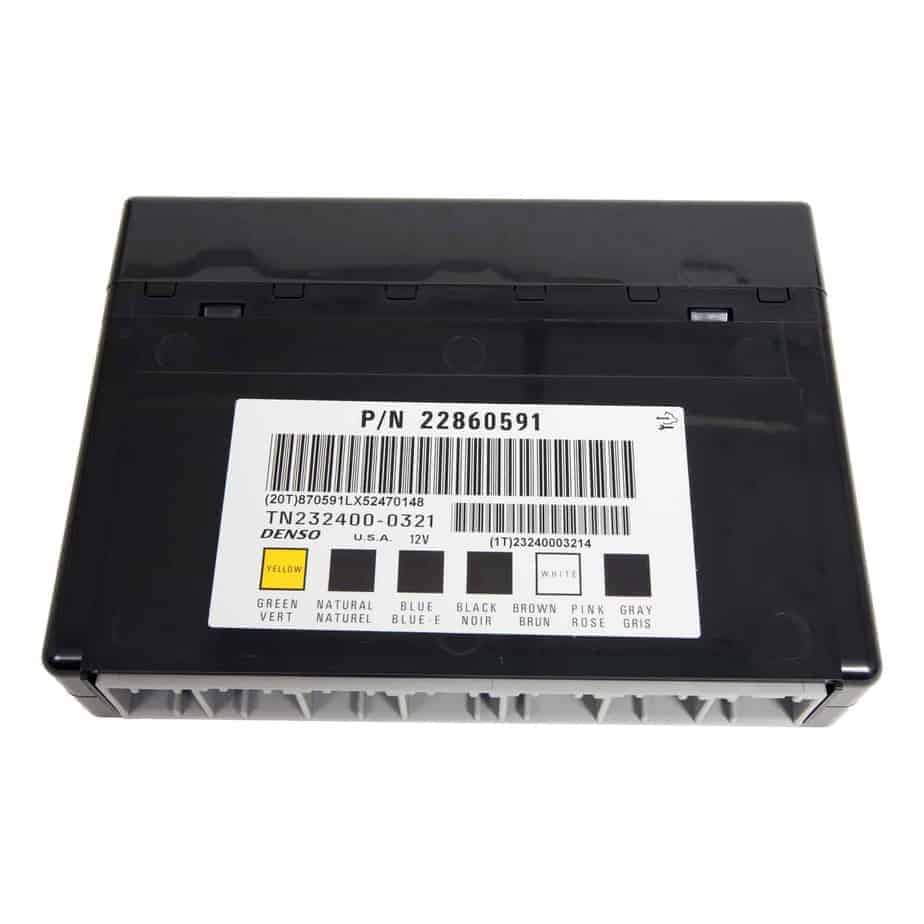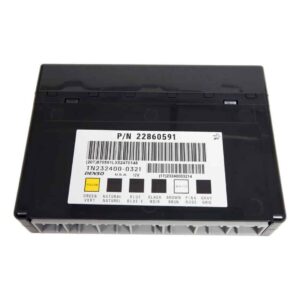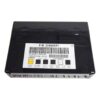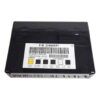Tired of Chasing Electrical Gremlins in Your GM Vehicle?
As a technician with over two decades of experience, I’ve seen it all. Flickering dashboard lights, power windows with a mind of their own, a security system that won’t let you start your own car—these aren’t just annoyances; they’re classic signs of a failing Body Control Module (BCM). The BCM is the central command center for your vehicle’s body electronics, and when it starts to go, it can create a cascade of baffling and frustrating problems. Don’t replace random switches and sensors. The root cause is often this central computer.
This isn’t just a replacement part; it’s a complete solution. We take a genuine OEM-quality GM Body Control Module and flash it with the latest official GM software, specifically programmed to your vehicle’s unique Vehicle Identification Number (VIN). This means you can skip the expensive trip to the dealership and the hassle of finding a shop with the right programming tools. We do the complex part for you, so you get a module that’s ready for installation right out of the box.
A Technician’s Notebook: The Case of the Haunted Express Van
A contractor brought his 2011 Express 2500 work van into my shop, completely fed up. The dome lights would stay on, draining the battery overnight. The power locks worked intermittently, and the radio would sometimes just shut off. He’d already replaced the battery and a door jamb switch with no luck. After connecting my scan tool, I saw a slew of communication error codes pointing away from the individual components and toward the network hub—the BCM. Water intrusion from a leaky windshield seal had corroded a few pins on the module, a common issue on these vans. We installed a VIN-programmed BCM, and every single one of his electrical gremlins vanished. It’s a textbook example of how a single module failure can cause widespread, confusing symptoms.
Is Your Vehicle Showing These BCM Failure Signs?
A faulty BCM can manifest in many ways. If you’re experiencing several of the following, there’s a strong chance your BCM is the culprit:
- ✔ Erratic or non-functional power windows, door locks, or mirrors.
- ✔ Interior or exterior lights that flicker, stay on, or don’t work at all.
- ✔ The security system acting up, causing no-start conditions or false alarms.
- ✔ The horn honking randomly or not working when pressed.
- ✔ Warning lights on the dashboard (like the airbag light) that won’t turn off.
- ✔ Intermittent issues with the radio or climate control systems.
- ✔ Communication error codes (U-codes) stored when scanned.
A Straightforward Guide to BCM Installation
Replacing the BCM is a manageable job for a DIYer with basic tools. While the exact location varies by model (see the fitment list), the process is generally similar.
- Safety First: Always disconnect the negative terminal from your vehicle’s battery and wait a few minutes to ensure all systems are powered down.
- Locate the BCM: On most of these vehicles, it’s located under the driver’s side or center of the dashboard. You may need to remove a lower dash panel for access.
- Disconnect and Remove: Carefully unplug the electrical connectors. They have locking tabs that need to be depressed. Once unplugged, unbolt or unclip the old BCM and remove it from the vehicle.
- Install the New Module: Mount your new, pre-programmed BCM in the same location and securely plug in all the electrical connectors. You should hear a ‘click’ as they lock into place.
- Reconnect Power: Re-attach the negative battery terminal.
- Post-Installation Procedures: This is a critical step. Turn the key to the ‘ON’ position. You may need to perform a security relearn procedure (often involves cycling the key). As noted, for full functionality and safety, a ‘Setup SDM Primary Key in BCM’ procedure is required to clear the airbag light, and a brake pedal position sensor calibration may be needed. These final steps require a bi-directional scan tool.
Verified Vehicle Compatibility List
This module is a direct replacement for a wide range of GM cars, trucks, and SUVs. Please match your vehicle from the list below. This part replaces numerous original part numbers, including 10382479, 15872388, 20815898, 22860591, 25892622, and many more.
AVALANCHE 1500 10
CAPRICE 11-13
CAPTIVA SPORT 12
CTS 08-13
DTS 06-11
ENCLAVE 08-12
EQUINOX 07-09
ESCALADE 10
ESCALADE ESV 10
ESCALADE EXT 10
EXPRESS 1500 VAN 08-12
EXPRESS 2500 VAN 08-12
EXPRESS 3500 VAN 08-12
G8 08-09
HUMMER H2 08-09
IMPALA 06-13
LUCERNE 06-11
MONTE CARLO 06-07
OUTLOOK 07-10
SAVANA 1500 VAN 08-12
SAVANA 2500 VAN 08-12
SAVANA 3500 VAN 08-12
SRX 07-09
STS 10
SUBURBAN 1500 10
TAHOE 10
TORRENT 07-09
TRAVERSE 09-12
VUE 08-10
YUKON 10
YUKON XL 1500 10
Note: Some models have specific IDs or engine options. Please verify with the detailed list provided in the original data or contact us with your VIN if you are unsure.
Frequently Asked Questions
Do I really need to provide my VIN?
Yes, absolutely. Providing your VIN is the only way we can program the module with the correct software and vehicle-specific options. This step is what makes the installation process so much simpler for you.
Will this fix my specific problem?
This GM Body Control Module is the solution for a wide array of common electrical faults. If your vehicle is showing multiple symptoms from our list, it’s highly likely this will resolve them. Proper diagnosis is always recommended.
What tools are required for the post-installation procedures?
To perform the ‘Setup SDM Primary Key’ for the airbag system and the brake pedal calibration, you will need a professional-grade bi-directional scan tool. Many local repair shops can perform these final configuration steps for you if you do not own one.
Is this a brand new part?
This is a top-quality, inspected, and tested component that is guaranteed to perform to OEM standards. It is programmed with the latest software from GM for optimal performance and longevity.
What happens if I don’t do the airbag or brake relearn?
Failure to perform the ‘Setup SDM Primary Key’ will result in the airbag warning light staying illuminated, and the supplemental restraint system (SRS) may not function correctly in an accident. The brake pedal calibration ensures proper brake light operation and interaction with the anti-lock brake system.



